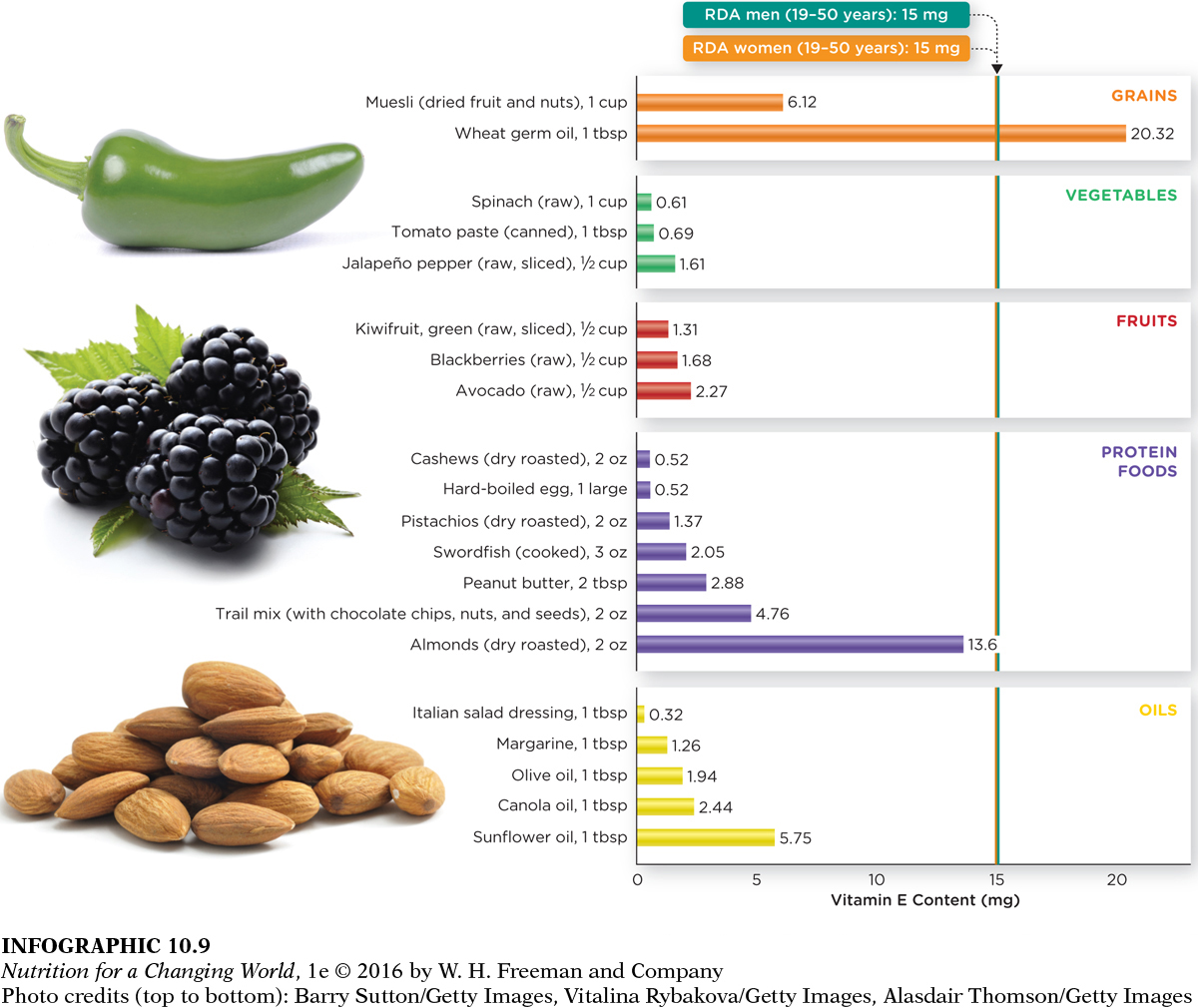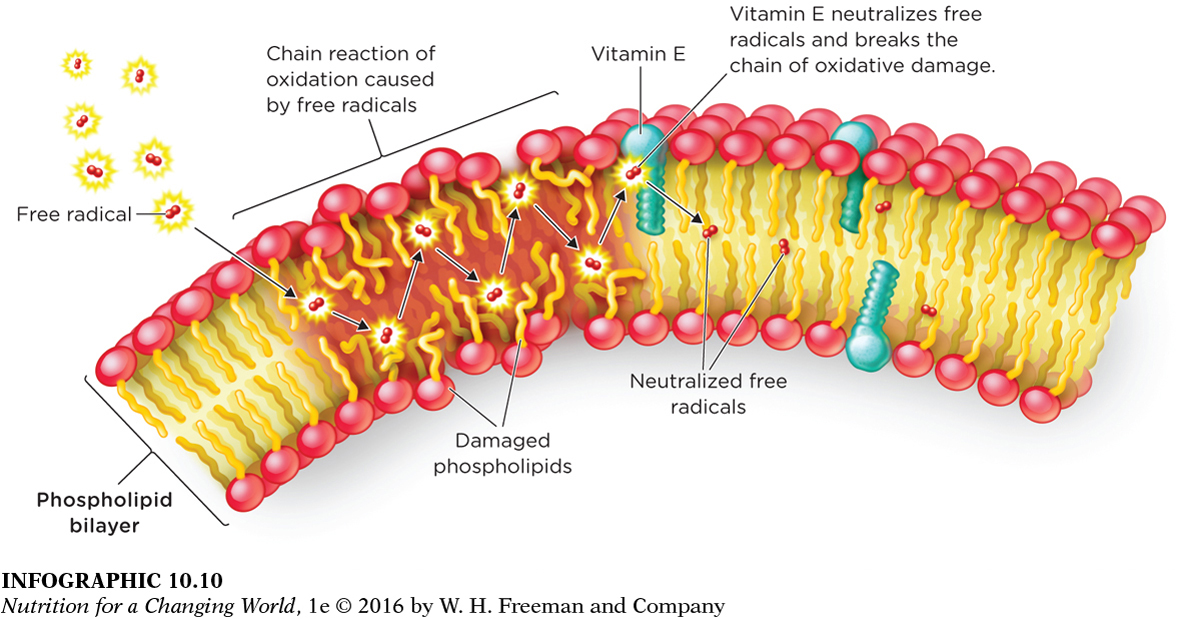VITAMIN E
TOCOPHEROLS a group of fat-
Vitamin E encompasses a group of fat-
Sources of vitamin E
Some foods (such as breakfast cereals) are fortified with vitamin E, but vitamin E is also found naturally in plant-

Question 10.8
 What foods that you consume regularly are good sources of vitamin E?
What foods that you consume regularly are good sources of vitamin E?
Good sources of vitamin E include almonds, sunflower oil, avocado, olive oil, and peanut butter.
Functions of vitamin E in the body
Because of its unique ability to effectively be incorporated into cell membranes, vitamin E acts within membranes as an antioxidant, protecting cells throughout the body from the oxidative damage that results from exposure to free radicals produced in the body or present in the environment. It also helps prevent oxidative changes in low-

Question 10.9
 What might be the consequences of free-
What might be the consequences of free-
Free-
Vitamin E appears to be of particular importance in maintaining healthy immune function by protecting white blood cells from oxidative damage, particularly in aging adults. Adequate intake of vitamin E is also necessary to prevent damage to nervous tissue. Many claims have been made about vitamin E’s potential to promote health and prevent and treat disease. Despite its role as an antioxidant, rigorous studies have not produced consistent and convincing evidence that vitamin E supplements (which are almost always alpha-
Vitamin E deficiency and toxicity
Nutrition surveys suggest Americans may be getting less vitamin E than they should, but researchers have only rarely documented deficiency in healthy adults, so specific symptoms are unclear. So, too, for toxicity—